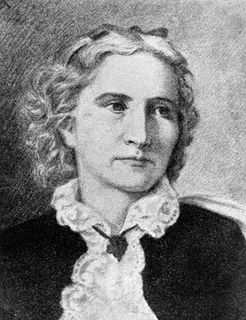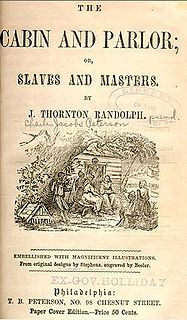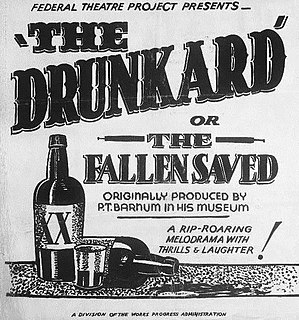Related Research Articles

Uncle Tom's Cabin; or, Life Among the Lowly. is an anti-slavery novel by American author Harriet Beecher Stowe. Published in two volumes in 1852, the novel had a profound effect on attitudes toward African Americans and slavery in the U.S., and is said to have "helped lay the groundwork for the [American] Civil War."

Harriet Elisabeth Beecher Stowe was an American author and abolitionist. She came from the Beecher family, a famous religious family, and became best known for her novel Uncle Tom's Cabin (1852), which depicts the harsh conditions experienced by enslaved African Americans. The book reached an audience of millions as a novel and play, and became influential in the United States and in Great Britain, energizing anti-slavery forces in the American North, while provoking widespread anger in the South. Stowe wrote 30 books, including novels, three travel memoirs, and collections of articles and letters. She was influential both for her writings and for her public stances and debates on social issues of the day.

Henry Ward Beecher was an American Congregationalist clergyman, social reformer, and speaker, known for his support of the abolition of slavery, his emphasis on God's love, and his 1875 adultery trial. His rhetorical focus on Christ's love has influenced mainstream Christianity to this day.

Lyman Beecher was a Presbyterian minister, the father of 13 children, many of whom became noted figures, including Harriet Beecher Stowe, Henry Ward Beecher, Charles Beecher, Edward Beecher, Isabella Beecher Hooker, Catharine Beecher, and Thomas K. Beecher.

Anne Isabella Noel Byron, 11th Baroness Wentworth and Baroness Byron, nicknamed Annabella and commonly known as Lady Byron, was an English mathematician and the wife of poet George Gordon Byron, more commonly known as Lord Byron.

The Minister's Wooing is a historical novel by Harriet Beecher Stowe, first published in 1859. Set in 18th-century New England, the novel explores New England history, highlights the issue of slavery, and critiques the Calvinist theology in which Stowe was raised. Due to similarities in setting, comparisons are often drawn between this work and Nathaniel Hawthorne's The Scarlet Letter (1850). However, in contrast to Hawthorne's The Scarlett Letter, The Minister's Wooing is a "sentimental romance"; its central plot revolves around courtship and marriage. Moreover, Stowe's exploration of the regional history of New England deals primarily with the domestic sphere, the New England response to slavery, and the psychological impact of the Calvinist doctrines of predestination and disinterested benevolence.

John Rankin was an American Presbyterian minister, educator and abolitionist. Upon moving to Ripley, Ohio, in 1822, he became known as one of Ohio's first and most active "conductors" on the Underground Railroad. Prominent pre-Civil War abolitionists William Lloyd Garrison, Theodore Weld, Henry Ward Beecher, and Harriet Beecher Stowe were influenced by Rankin's writings and work in the anti-slavery movement.

The Harriet Beecher Stowe House is a historic home in Cincinnati, Ohio which was once the residence of influential antislavery author Harriet Beecher Stowe, author of the 1852 novel Uncle Tom's Cabin.

The Harriet Beecher Stowe House is a historic house museum and National Historic Landmark at 73 Forest Street in Hartford, Connecticut that was once the home of Harriet Beecher Stowe, author of the 1852 novel Uncle Tom's Cabin. Stowe lived in this house for the last 23 years of her life. It was her family's second home in Hartford. The 5,000 sq ft cottage-style house is located adjacent to the Mark Twain House and is open to the public. It was listed on the National Register of Historic Places in 1970, and declared a National Historic Landmark in 2013.

Anne Whitney was an American sculptor and poet. She made full-length and bust sculptures of prominent political and historical figures, and her works are in major museums in the United States. She received prestigious commissions for monuments. Two statues of Samuel Adams were made by Whitney and are located in Washington, D.C.'s National Statuary Hall Collection and in front of Faneuil Hall in Boston. She also created two monuments to Leif Erikson.

Originating in New England, one particular Beecher family in the 19th century was a political family notable for issues of religion, civil rights, and social reform. Notable members of the family include clergy (Congregationalists), educators, authors and artists. Many of the family were Yale-educated and advocated for abolitionism, temperance, and women's rights. Some of the family provided material or ideological support to the Union in the American Civil War. The family is of English descent.
Mark Twain: The Musical is a stage musical biography of Mark Twain that had a ten-year summertime run in Elmira, NY and Hartford, CT (1987–1995) and was telecast on a number of public television stations. An original cast CD was released by Premier Recordings in 1988, and LML Music in 2009 issued a newly mastered and complete version of the score. Video and DVD versions of the show are currently in release.

The Harriet Beecher Stowe House is a historic home and National Historic Landmark at 63 Federal Street in Brunswick, Maine, notable as a short-term home of Harriet Beecher Stowe and Calvin Ellis Stowe and where Harriet wrote her 1852 novel Uncle Tom's Cabin. Earlier, it had been the home of Henry Wadsworth Longfellow as a student. It is today owned by Bowdoin College. A space within the house, called Harriet's Writing Room, is open to the public.

Calvin Ellis Stowe was an American Biblical scholar who helped spread public education in the United States. Over his career, he was a professor of languages and Biblical and sacred literature at Andover Theological Seminary, Dartmouth University, Lane Theological Seminary, and Bowdoin College. He was the husband and literary agent of Harriet Beecher Stowe, author of the best-seller Uncle Tom's Cabin.

The Cabin and Parlor; or, Slaves and Masters is an 1852 novel by Charles Jacobs Peterson, writing under the pseudonym J. Thornton Randolph.

The Drunkard; or, The Fallen Saved is an American temperance play first performed on February 12, 1844. A drama in five acts, it was perhaps the most popular play produced in the United States until the dramatization of Uncle Tom's Cabin premiered in 1853. In New York City, P.T. Barnum presented it at his American Museum in a run of over 100 performances. It was among the first of the American temperance plays, and remained the most popular of them until it was eclipsed in 1858 by T. S. Arthur's Ten Nights in a Bar-Room.

The Life of Josiah Henson, Formerly a Slave, Now an Inhabitant of Canada, as Narrated by Himself is a slave narrative written by Josiah Henson, who would later become famous for being the basis of the title character from Harriet Beecher Stowe's 1852 novel Uncle Tom's Cabin. The Life of Josiah Henson, published in 1849, is Henson's first work but was dictated to Samuel A. Eliot, who was a former Boston Mayor known for his anti-slavery views. Although Henson was an accomplished orator, he had not yet learned to read and write. The narrative provides a detailed description of his life as a slave in the south.

Lewis and Harriet Hayden House was the home of African-American abolitionists who had escaped from slavery in Kentucky; it is located in Beacon Hill, Boston. They maintained the home as a stop on the Underground Railroad, and the Haydens were visited by Harriet Beecher Stowe as research for her book, Uncle Tom's Cabin (1852). Lewis Hayden was an important leader in the African-American community of Boston; in addition, he lectured as an abolitionist and was a member of the Boston Vigilance Committee, which resisted the Fugitive Slave Act of 1850.
Katharine Seymour Day was an American preservationist from Hartford, Connecticut. She worked as a member of the Hartford City Planning Commission to preserve historic homes in Connecticut and helped establish the Children’s Museum of Hartford and the home of Mark Twain as a memorial. She served as president of the Mark Twain Library and Memorial Commission. She was inducted into the Connecticut Women's Hall of Fame in 1994. The Katharine Seymour Day House has been preserved as part of the Harriet Beecher Stowe House Museum.
Raymond S. Lane, Jr., sculptor, created a series of hand-built clay sculptures about Harriet Tubman an Underground Railroad conductor, called “the Moses of the anti-slavery movement” by Cincinnati Enquirer reporter Allen Howard, was first displayed in 2002 in the Children's Learning Center of the Public Library of Hamilton County’s main building, 800 Vine St. in downtown Cincinnati. The clay works depict scenes in the life of the 19th century Underground Railroad heroine. The exhibits is called “Harriet Tubman's Experience in the Underground Railroad.” The sculptures currently are displayed at the Harriet Beecher Stowe House in Cincinnati, Ohio.
References
- ↑ Mattingly, Carol (editor). Water Drops from Women Writers: A Temperance Reader. Carbondale and Edwardsville, Illinois: Southern Illinois University Press, 2001: 208. ISBN 0-8093-2399-0
- ↑ Koester, Nancy. Harriet Beecher Stowe: A Spiritual Life. Grand Rapids, MI: William B. Eerdmans Publishing Company, 2014: 88. ISBN 978-0-8028-3304-4